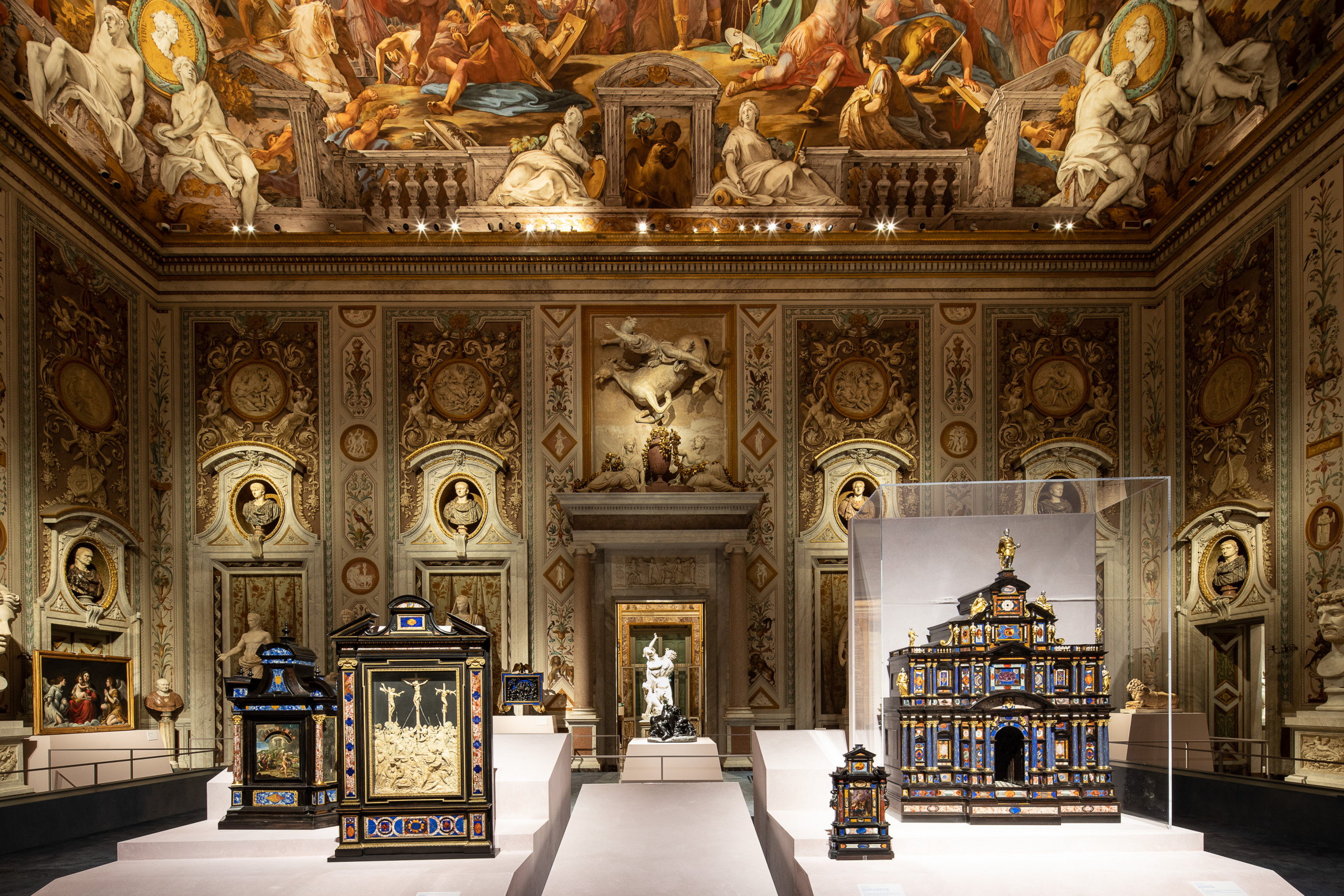The collection and coloured stones

The fashion for painting on stone in Rome is connected to the collecting of antiquities and to the passion for ancient marbles: in a game among the sister arts, sculptors use coloured marbles and painters paint on stone, while precious metals and woods concur to the creation of extraordinary objects, such as altars, cabinets, and clocks, shaped like buildings in miniature, and embellished by small sculptures, bas-reliefs and pictures. The tabletop in the Galleria Borghese and the cabinet that used to belong to the Borghese family, originally built for the Portuguese Luigi Gomez, are among the most splendid examples of this kind of furniture (J. P. Getty Museum). The sculptor Giovanni Battista Della Porta was one of the main specialists of the inlay of hardstones: he owned many coloured marbles and ancient statues, including the lion in alabaster exhibited here, sold by his heirs to the Borghese.
When inserted in such objects, paintings on stone, that often were not particularly expensive, acquired monetary and symbolic value. Reliquaries, considered the earthly abode of a saint, with their dazzling semi-precious stones evoked the radiance of sanctity. In the clock from the Musei Capitolini, the permanence of the lapis lazuli and jasper is juxtaposed to inevitable passing of time.
Until the beginning of the Seventeenth century in Rome many altarpieces were painted on slate. Due to their weight, they are impossible to move, but the large slab of slate used by Francesco Albani representing a Madonna and Child with Angels approximates their bulk. The iconic devotional image reminds the viewer that the child is the living stone upon which the structure of the community of believers is based. Alessandro Algardi too uses the material to express meaning: the black marble of his Allegory of Sleep recalls the darkness of night, but like touchstone it also reveals quality, evincing the ability of the artist who had been severely criticized by his spiteful colleagues.